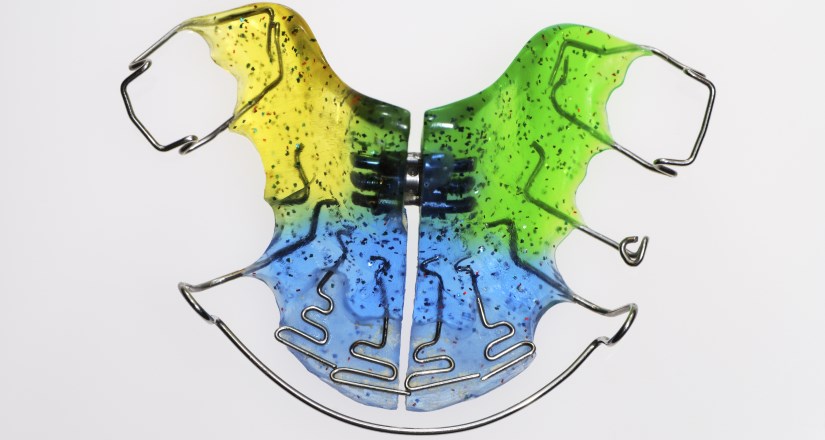First independent sound effects burst onto the stage, allowing everyone to get their great sounds out there. Then Soundly introduced the concept of cloud sound effects – and now a German vocal coach is changing our very understanding of how a sound effect is created.
The so-called Rambly technique is a pioneering new method for sound creation, invented by vocal coach Hans von Essen, and it’ll completely transform sound effects as we know them. Here’s why – and how you can learn it too.
NB: Please notice the publishing date :)
Interview by Asbjoern Andersen
Hi Hans, please introduce yourself and the Rambly technique:
My name is Hans von Essen, and I’ve worked as a vocal coach for many years.
What if we could simply create the sound effects we need ourselves, using just our vocal cords and some clever technology?
A few years back, I too noticed the meteoric rise in independent sound effects libraries – and that got me thinking: Do we really need sound effects libraries? What if we could simply create the sound effects we need ourselves, using just our vocal cords and some clever technology? After some intense studying, training and experimenting, I invented the Rambly technique.
So what exactly is it?
My technique is inspired by talents such as Fred Newman. His ability to imitate everything from barking dogs, seagulls, airplanes and hatching aliens using nothing but his voice is a prime example of the stuff you’ll learn with the Rambly technique.
Fred Newman and his inspiring vocal work
But it goes much, much further. With my technique you’ll learn to essentially recreate any sound in existence, and to do it so well that it cannot be distinguished from the real thing. And yes, I do mean any sound. In fact, I mean it so much that it’s become the tagline for the Rambly Technique: ‘If it makes a sound, you’ll make it too’.
[tweet_box]Introducing Rambly – the technique that forever changes sound effects as we know them[/tweet_box]
That sounds fantastic – but how does it work?
I’ve discovered something that changes what we, as humans, are capable of in terms of our voices – and that’s a cornerstone of my technique. The secret? The uvula. Yes, after thousands and thousands of years of just hanging there, you’ll finally be putting it to good use.
Do some low-frequency humming while vigorously shaking your uvula, and it’ll sound exactly like the historic eruption at Krakatau in 1883
Through training, you can learn to use your uvula to produce some absolutely unbelievable sounds: Need to create the sound of a volcanic eruption? Using my technique, do some low-frequency humming while vigorously shaking your uvula, and it’ll sound exactly like the historic eruption at Krakatau in 1883.
Need to imitate the ultrasonic squeals of a larger bat on the hunt? By rapidly spinning and slightly bending your uvula, you’ll create an almost deafening, sonar-esque ultrasonic sound. Add a dash of overtone singing, and your audience will literally go deaf, so use your powers with great care.
Guest instructor Anna-Maria Hefele demonstrates polyphonic overtone singing – a tiny component of the Rambly technique
Now, at this very moment I can imagine that some readers may be reaching for their respective uvulas to try it out – but don’t. Just don’t.
I can imagine that some readers may be reaching for their respective uvulas to try it out – but don’t. Just don’t.
If you haven’t mastered the Rambly technique, you’re wasting your time – and you might end up dislocating your uvula if you’re not doing it correctly. Painful, very painful!
So is learning the uvula approach all there is to the Rambly technique?
No. Before you can literally recreate any sound in existence, there’s a fundamental problem with the way our vocal abilities work: A lot of the sounds we can produce can only be made with the mouth closed – and that’s a big, big problem. To overcome this, I’ve devised what I call The VoKal Kit. So what is it? The VoKal Kit consists of two things:
Wear these to capture a 360 degree oralogram of, essentially, everything that goes on in your mouth, sonically
A set of what I like to call Sonic Braces, with four tiny microphones mounted in each quadrant of the mouth for maximum coverage. You’ll wear these to capture a 360 degree oralogram of, essentially, everything that goes on in your mouth, sonically.
You’ll then run a few cables from the Sonic Braces to the second piece of the puzzle: The Headband. Unsurprisingly, it’s a headband that allows you to head-mount the iPad Pro that’s running the recording software. For added flexibility, you can also rear-mount the iPad in case you need to look at stuff while doing your in-mouth performances. The amount of hyper-realistic sounds you can create with this breakthrough approach is simply staggering.
That sounds very clever, but also a bit clumsy, with a forehead-mounted iPad and all?
No. We need the cables from the braces to the iPad to be as short as humanly possible for clarity, so this was deemed to be the optimal position. Most real talents perform with their eyes closed for added feeling anyway, so it’s no big deal.

Hans von Essen, resting, moments before inventing the Rambly technique
It almost sounds too good to be true – is there a catch?
No. Well, actually, there’s a slight drawback to the Rambly technique: To keep your vocal cords in pristine condition, you’ll be required to take a vow of silence that you need to rigorously stick to anytime you’re not performing. Thankfully, with the advent of platforms such as Facebook Messenger and SMS, you’ll have plenty of opportunities to communicate with your surroundings even during your time off.
Given the usefulness of the Rambly technique, once you’ve mastered it, I fully expect you to be working all the time
And actually, given the usefulness of the Rambly technique once you’ve mastered it, I fully expect you to be working all the time anyway. Problem solved. Oh, one more thing: The braces don’t come off again.
Okay, so you need to wear braces that won’t come off, mount an iPad Pro to your forehead and take a vow of silence to master the Rambly technique. Still, I’m sold on that idea of being able to create every single sound effect myself – how do I get started?
I’m completing the course materials as we speak, so it’ll just be a few weeks and my instructional videos will teach you everything you need to know, and then some. For the VoKal Kit, I’m working with several microphone manufacturers to develop equipment that can capture the finer in-mouth performances while withstanding large amounts of saliva. The development process has been slightly gross, to be honest.
Longer-term, well, I of course expect it to be the end of independent sound effects as we know them. Too bad, but hey, that’s progress.
The development process has been slightly gross, to be honest
If you’re an existing indie sound effects creator, I’ll be running a crossgrade offer that allows you to seamlessly transition from being an indie SFX creator to being a certified Rambly performer instead – so there’s absolutely nothing to worry about. I’m so excited for what’s ahead for the Rambly technique!




